40 лет Санкт-Петербургской типологической школе - [34]
1. The structure to be + participle with — n/-t
Diachronically, it is well known that the passive past participle is based on the Indo-European adjective with *-to or *-no, which was originally attached to a root or to a nominal stem. Therefore, these forms were initially independent of the verbal system and served to indicate «a state resulting from the possession of the notion indicated by the noun or of the process expressed by the root» [Meillet 1965: 268]. Their integration into the verbal system is therefore an innovation in Indo-European languages. Concerning the earliest period of common Slavic, forms with *-to or *-no are no longer nominal derivatives but participles, by virtue of their integration in the verbal system. This is why constructions with an — n/-t participle and the auxiliary «to be» first functioned as denoting a state, their actional meaning only appearing later [Maslov 1988: 77].
It is therefore unsurprising that in Slavic languages the interrelation of constructions with — n/-t is organised around a stative reference which, depending on several factors, may or may not imply a preceding event. In fact, certain constructions are conceived as purely stative for two raisons:
1. the participles may sporadically acquire this meaning because, diachronically, they are linked to a root or a nominal theme or because they are semantically removed from the verb (in this case, Khrakovskij [1991:151] speaks of lexicalisation):
(1) Bolšaja čast ee territorii byla pokry-t-a
great part its territory.GEN was cover.PF-PPP-SG.F
lesami
forest.INSTR.PL
«The greater part of its territory was covered with forest».
(2) Straty są spowodowane dlugotrwalą suszą
losses are cause.PF.PPP long.term.INSTR drought.INSTR
«The losses have been caused by a long term drought»;
2. the verbs are polysemic and the participles are used in their true sense (3a) or may take on psychological connotations (3b):
(3a) Lodkata beše privărzana do našata ograda
boat.the be.IMPF attach.PF-PPP.SG.F beside our.the gate
«The boat was attached to our gate».
(3b) Deteto e privărzano kăm majka
child.the be-PRES attach.PF-PPP.SG.NEUTER to mother si
REFL.DAT
«The child is attached to his mother».
Only (3a) is open to discussion because, out of context, it may be analyzed either as an objective resultative, as defined by Nedjalkov and Jaxontov [Nedjalkov, Jaxontov 1988: 9][18], or as a passive form, because the perfective participle is bound to the base verb privăr-zvam/privărza «to tie/attach» and the meaning of the construction is thus linked to transitivity and passivization (4a). But this perfective participle is mostly used in a psychological sense (3b) and it is thus semantically bound to the reflexive intransitive verb privărzvam se/privărza se and to (4b):
(4a) Toj privărza lodkata do našata ograda
he attach.PF-AOR-3 SG boat.the beside our.the gate'
He attached the boat beside our gate'.
(4b) Deteto se privărza kăm mene
child.the REFL attach.PF-AOR-3SG to me.DAT
«The child is attached to me».
The literature provides many examples in which the constructions «to be» + — n/-t participles are used with a purely adjectival meaning. They then predicate a property of the entity in the same manner as an adjective:
(5) Šinelite bjaxa tănki i iznoseni, kepetata
coats.the were light.PL and wom.out.PF.PPP.PL kepi.the izpomačkani…
wrink.PF.PPP.PL
«The coats were thin and worn, the kepis (were) wrinkled…».
Removed from any context, one may consider iznoseni «worn-out» and izpomačkani «wrinkled» as resultative participles, since they may be associated with transitive verbs and allow the characterisation of the objects «coats» and «kepis» as affected and changed by a preceding event, but the coordination of the adjective tănki «light» leads to the elimination of the resultative interpretation in favour of an adjectival interpretation. Therefore (5) denotes a state. Syntactically, the construction is predicative for the two following reasons: 1. «to be» does not function as a voice auxiliary because it operates on the past passive participle as it operates on the coordinated adjective tănki «light»; 2. the past passive participle fills the syntactic function of an attribute, and, being a verbal adjective, cannot be treated as a participle oriented toward the patient of the basic transitive verb. More complex is the following Bulgarian example (quoted by [Barakova 1980: 141]):
(6a) Njakoi ot lozjata bjaxa veče obrani i
some of vines be.IMPF.3PL already pick.PF.PPP.PL and pusti
empty.PL
Lit. «Some vineyards were already harvested and deserted».
If one admits that the form bjaxa obrani «were harvested» is resultative because it is formally derived from the verb obiram/obera «harvest, pick fruit» and because it implies a resulting state evidenced by the adverb vece «already», it would be difficult to explain the occurrence of the coordinated adjective pusti «empty». Just as in example (5), the participle is part of the paradigm of adjectives and the utterance denotes a state. As a result, it is impossible to give it either a corresponding active counterpart (6b) or to introduce an agent (6c):
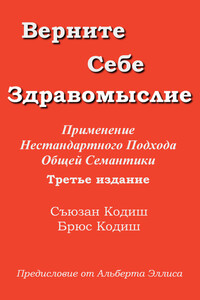
«Верните Себе Здравомыслие» – это книга, которая объясняет базовые положения общей семантики более простым, кратким и доступным языком в сравнении с 900-страничной формулировкой Альфреда Коржибски – Science and Sanity, а также даёт множество полезных и простых рекомендаций для практики и применения принципов Общей Семантики в повседневной жизни. Рекомендована к прочтению всем интересующимся данной дисциплиной, а также тем, кто желает приобрести новые навыки решения жизненных проблем. Третье издание.
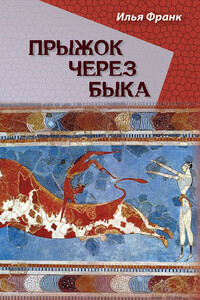
Почему, оказавшись между двух людей с одинаковыми именами, вы можете загадывать желание? На сей насущнейший вопрос и отвечает эта книга. Если же серьезно, то она рассказывает о зверином двойнике героя – в искусстве вообще и в литературе в частности.
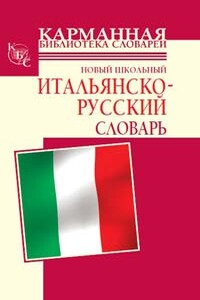
Словарь, созданный русскими и итальянскими специалистами, знакомит читателей с новыми словами, их различными значениями и оттенками, а также случаями употребления, которые можно активно использовать в повседневной жизни.Более 1000 слов и текстовых примеров, позволяющих раскрыть особенности синтаксиса современного итальянского языка.

В книге изучается феномен непрямого выражения смысла в языке. Сопоставляются различные толкования этого явления в русском символизме, феноменологии, лингвистике, семантике, аналитической философии, структурализме, теориях референции, тропологии, нарратологии, деконструктивизме и др. Выявляются и анализируются разнообразные конкретные способы непрямого выражения смысла: расщепленная, отсроченная, непрямая референция; двуголосие, полифония, антиномические конструкции; расшатывание акта именования, символ и метафора; ингенциональные и аттенциональные сцепления, модальные и тональные сдвиги; смещения и наслоения фокусов внимания, расщепление «я» говорящего на частные «голоса», их попеременные смены, чередования и наложения; саморедукция авторского голоса и ее степени, стадия инсценированной «смерти автора» и т.
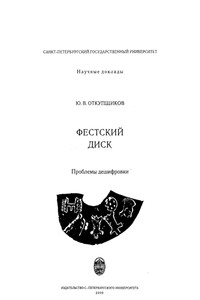
Данная публикация посвящена трудному и запутанному вопросу по дешифровке таинственного памятника древней письменности — глиняного диска, покрытого с обеих сторон надписью из штампованных фигурок, расположенных по спирали. Диск был найден в 1908 г. на Крите при раскопках на месте древнего Феста. Было предпринято большое количество «чтений» этого памятника, но ни одно из них до сих пор не принято в науке, хотя литература по этому вопросу необозрима.Для специалистов по истории древнего мира, по дешифровке древних письменностей и для всех интересующихся проблемами дешифровки памятников письменности.
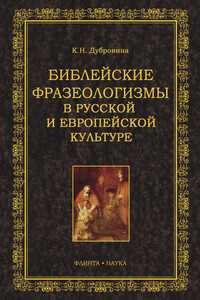
Книга представляет собой научный труд в популярном, доступном изложении. В ней рассказывается о библейских фразеологизмах (образных выражениях, пословицах, поговорках, афоризмах, крылатых изречениях) и библеизмах – словах в русском и других европейских языках, а также об отражении библейских образов, сюжетов, идей, правовых и морально – этических норм и воззрений древнего Востока в культуре народов, исповедующих христианскую религию. Особое внимание уделяется русской национальной культуре: использованию библейских слов и выражений в русском языке, в художественной и публицистической литературе, в изобразительном и музыкальном искусстве.Для гуманитариев разных специализаций: филологов, историков, культурологов, искусствоведов, школьных учителей, преподающих основы христианской (православной) культуры, а также для самого широкого круга читателей, интересующихся историей русского языка и культурой русского и европейских народов.Книга создана на кафедре общего и русского языкознания филологического факультета Российского университета дружбы народов (РУДН) при поддержке Российского государственного научного фонда (РГНФ).